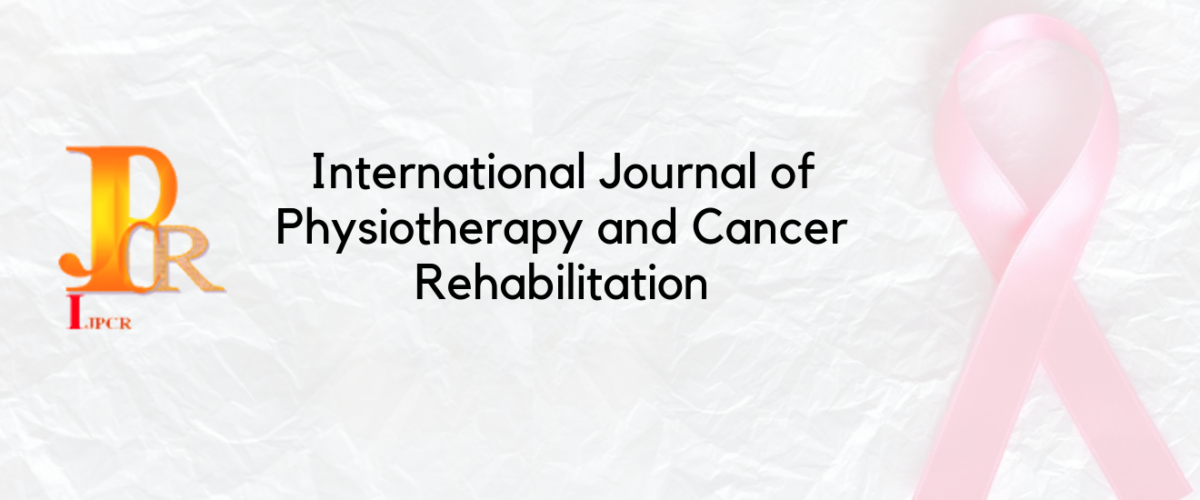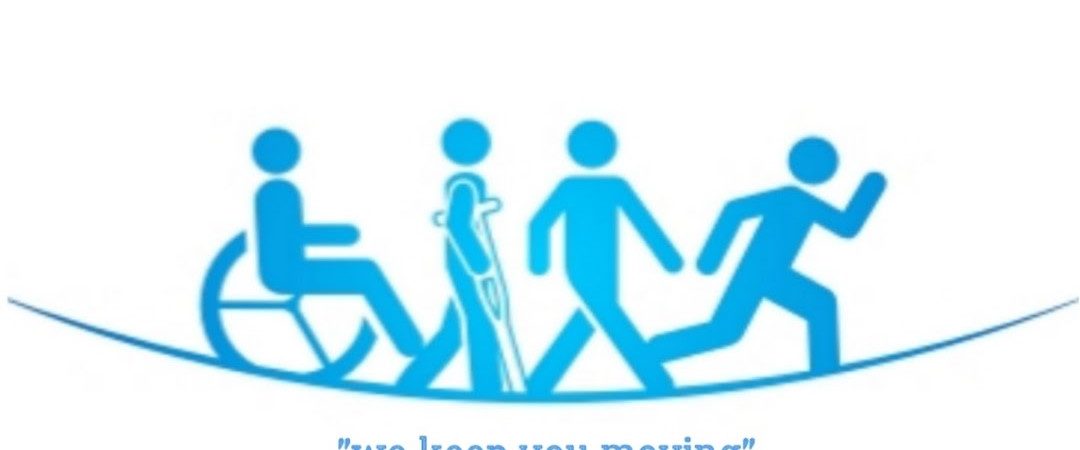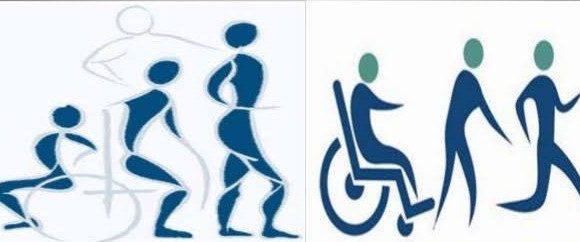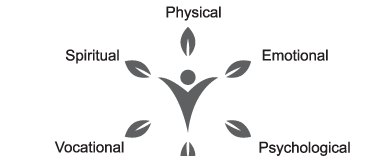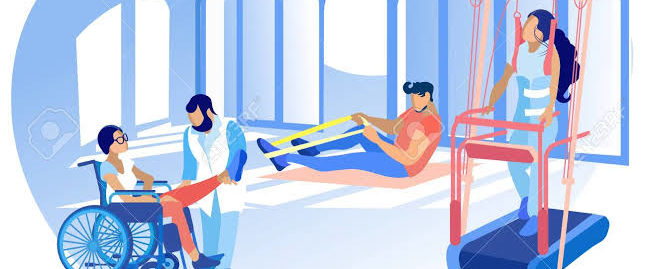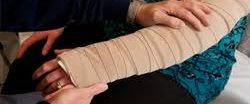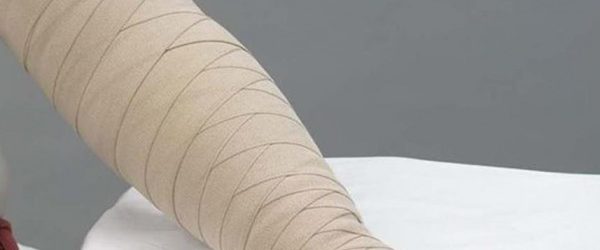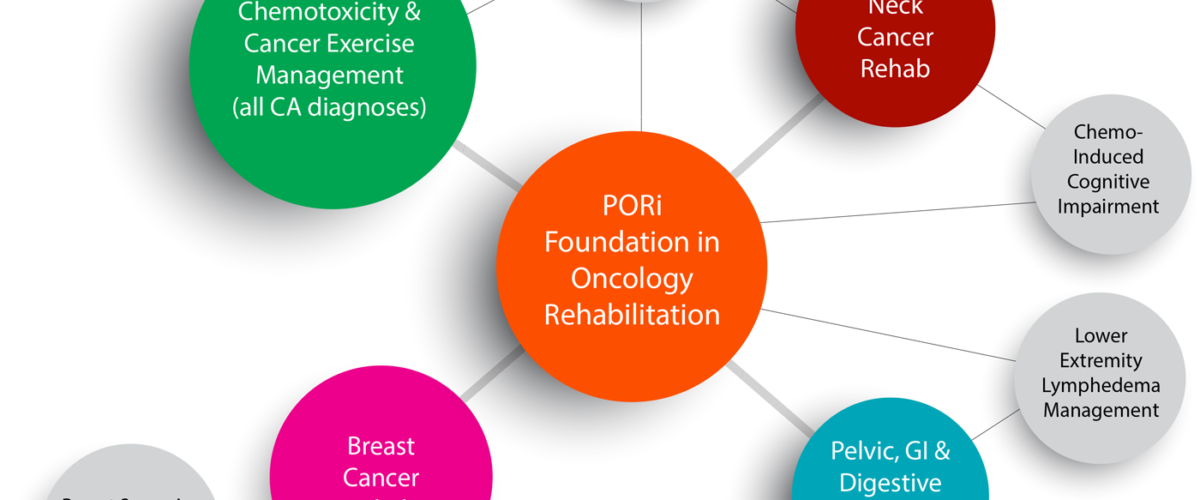EFFECTS OF PRE OPERATIVE EDUCATION AND VENTILATORY EXERCISE TRAINING IN REDUCING ANXIETY AND IMPROVEMENT IN RECOVERY AMONG CARDIAC PATIENTS- Dr. Chirag Purbia
EFFECTS OF PRE OPERATIVE EDUCATION AND VENTILATORY EXERCISE TRAINING IN REDUCING ANXIETY AND IMPROVEMENT IN RECOVERY AMONG CARDIAC PATIENTS
DR.CHIRAG PURBIA, Assistant Professor,
Geetanjali college of Physiotherapy, Udaipur, Rajasthan
OBJECTIVE:
To evaluate the effects of pre operative education and ventilatory exercise training in reducing anxiety and improvement in recovery among cardiac patients.
BACKGROUND:
Patients awaiting cardiac surgery typically experience physical and psychological stress. Although
there is evidence that preoperative education can improve postoperative outcomes among
general surgical patients, less is known about preoperative education for patients
undergoing cardiac surgery. Physiotherapists play an important role in the preparation and
rehabilitation of patients who had undergone surgical procedures. In the present study, the
effects of pre operative education and ventilatory exercise training were observed to know
the effectiveness in reducing anxiety and improvement in recovery among patients
undergoing cardiac surgery.
METHODOLOGY:
This study includes 100 subjects both male and female undergoing elective cardiac
surgery of age 18-60 years who were eligible as per the inclusion criteria. Pre- participation
questionnaire along with the consent form was given to the subjects to fulfill criteria for
selection. Subjects were allocated physiotherapy instructions and ventilatory exercise
training pre operatively. The primary outcome was change in anxiety which was measured
by BAI (Beck Anxiety Inventory) pre operatively before and after education and training and
4 days post operatively. Secondary outcomes were pain and SPO2 which were measured by
VAS (Visual Analogue Scale) and pulse oxymetry respectively.
RESULTS:
Results showed that anxiety score after pre operative instructions and ventilatory
exercise training exercise was significantly higher (p<0.01) in males as compared to females.
There was a significant decrease in score of anxiety pre and post operatively after
physiotherapy instructions and ventilatory exercise training (p<0.01) and there was also a
significant reduction in VAS score (p<0.01) whereas SPO2 was increased significantly
(p<0.01). Thus it showed that pre operative education and ventilatory exercise training is
effective in reducing anxiety and improves recovery among patients undergoing cardiac
surgery.
CONCLUSION:
This study provides empirical support for the hypothesis that a pre operative
education intervention involving counseling, verbal explanation and ventilatory training are
effective in reducing anxiety and pain among patients undergoing cardiac surgery. This study
not only have important implications for effective strategies to control patient’s elevated
anxiety in anticipation of cardiac surgery, but also help make recommendations for quality
improvement of pre operative education in practice.
KEY WORDS: Pre operative education, cardiac surgery, anxiety, ventilatory training.
INTRODUCTION
Coronary artery disease is the leading cause of morbidity and mortality worldwide. For more than 15 years,
WHO has been sounding an alarm on the rapidly rising burden of cardiovascular disorders.
The reported prevalence of coronary artery disease (CAD) in adult surveys has risen 4-fold
over the last 40 years to a present level of around 10%.8
The burden of CVD is projected to be the highest in India by the year 2020, as compared to other
countries.9 In the WHO-PREMISE study, the proportion of CHD among patients less than 50
years of age, was highest in India (22.6% in males and 3% in females).10 In the Million Death
Study(2009), the authors determined that CVD are the leading cause of death (20.3% in
males and 16.9% in females) among Indian adults (age 25-69 years). 11
Cardiovascular diseases, especially coronary heart disease (CHD), are epidemic in India. The Registrar
General of India reported that CHD led to 17% of total deaths and 26% of adult deaths in
2001-2003, which increased to 23% of total and 32% of adult deaths in 2010-2013.8
Cardiovascular disease is the leading global cause of death, accounting for more than 17.3 million deaths
per year, a number that is expected to grow to more than 23.6 million by 2030.12
In 2013, cardiovascular deaths represented 31 percent of all global deaths, with 80 percent of those deaths
taking place in lower and middle income countries. Nearly 801,000 people in the U.S. died
from heart disease, and other cardiovascular diseases in 2013. That’s about one of every
three deaths in America. About 2,200 Americans die each day from these diseases, one
every 40 seconds.12
Cardiac surgery is a procedure performed in patients with cardiovascular disease. After cardiac surgery,
various complications that will require specific care, especially in the respiratory system, can
be observed. These complications can lengthen the hospital stay of patients, causing
increased hospital costs and becoming an important cause of morbidity and mortality.14
The coronary artery bypass grafting presents satisfactory results, however, is has the pain caused by the
nociceptive stimulus from sternotomy as an important cause of mortality and morbidity in
the postoperative period, which leads less effectiveness of cough, by adopting a rapid and
superficial breathing, and can cause pulmonary complications such as atelectasis.15
Nevertheless, patients who had undergone heart surgery may suffer psychological disorders such as
anxiety, which is hardly noticeable in the pre-operative, and it may go unnoticed by the
medical team, since often such disorder is related to physical illnesses.16 These can
exacerbate symptoms of existing cardiovascular disease, adversely affect physiological
parameters before and during anaesthesia, and can result in prolonged recovery .25,26
Cardiac patients with a high level of anxiety can experience physical symptoms including headache,
dizziness, nausea, muscle weakness, fatigue, sweating, and difficulty falling asleep, or even
more intense symptoms such as chest pain, palpitations, shortness of breath. Chest pain is a
common symptom of anxiety and may take form of a sharp pain or a feeling of visceral
tightness.29
Decreases in essential parameters of vital capacity, functional residual capacity, and forced expiratory
volume may directly contribute to atelectasis, which can contribute to postoperative
pulmonary complications. Pulmonary function is further compromised by hypoventilation,
decreased mucous clearance, decreased respiratory muscle function, increased work of
breathing, and hypoxia—all ramifications of the surgical procedure. 36Additionally, walking
ability is limited after CABG surgery.37
Breathing exercises and ventilatory training are fundamental interventions for the prevention and
management of post operative complications (PPC’S). Breathing exercises and ventilatory
training includes diaphragmatic breathing, segmental breathing, inspiratory resistance
training, glossopharyngeal breathing, breathing techniques for the relief of dyspnea during
exertion.39
Chest mobilization exercises combine active movements of the trunk or extremities with deep breathing.
They are designed to maintain or improve mobility of the chest wall, trunk and shoulder
girdles when it affects ventilation or postural alignment.39
Airway clearance is an important part of management of patients. An effective cough is necessary to
eliminate respiratory obstructions and keep the lungs clear. ACBT (active cycle of breathing
technique) can be used to stimulate a stronger cough, improving clearance of secretions.
Postural drainage, another intervention for airway clearance, is a means of mobilizing
secretions in one or more lung segments to the central airways and cleared by coughing or
endotracheal suctioning.39,40
Incentive spirometry is a form of ventilatory training that emphasizes sustained maximum inspirations.39
Pre-operative education is defined as providing the patient with health related information, psychosocial
support and the opportunity to learn specific skills in preparation for surgery. Pre-operative
program might include a number of components and inclusion of family members, teaching
of specific skills.4
Physiotherapists play an important role in the preparation and rehabilitation of patients who had
undergone surgical procedures. In addition to having a large arsenal of techniques, the,
physiotherapist has been one of the professionals that more time is next to the patients. As
such, it is suggested that time spent is better spent, by favoring professionals to clarify the
doubts of the patients and guide them to the new situations that they will have to face.5
Early mobilization, positioning, breathing exercises and techniques for bronchial hygiene are the usual
techniques utilized.1
METHODOLOGY:
A total 100 number of both males and females were selected or this study
undergoing cardiac surgery was taken from CTVS ICU Geetanjali Medical College and
Hospital (GMCH). Based on assessment, interview and questionnaire subjects were excluded
of Acute and Chronic Asthma, Previous Cardiac Surgical history, Unstable vitals, Cardiac
pacemaker, Shortness of breath more than grade 3or 4, Pregnancy, Unstable angina
pectoris, Psychosomatic disorders. information and demonstrations of ventilatory exercises
was performed to the patients individually, for the improvement of pulmonary ventilation
and bronchial hygiene. Explanation to the patients was given regarding sternotomy and the
importance of maintaining an appropriate pulmonary ventilation and cough, so avoiding
possible pulmonary complications. Each patient received on written, physiotherapeutic
guidelines on ventilatory exercise and ventilatory exercise training that could be performed
after surgery. After guidance, anxiety was evaluated pre and post operatively by Beck
Anxiety Inventory. When it was necessary, the ventilatory exercises were reminded to
patients. The primary outcome was change in anxiety which was measured by BAI (Beck
Anxiety Inventory) pre operatively before and after education and training and 4 days post
operatively. Secondary outcomes were pain and SPO2 which were measured by VAS (Visual
Analogue Scale) and pulse oxymetry respectively.
RESULTS:-
Pair Variables Mean SD SEm T Df P
1
Pre operatively BAI at the time
of admission and BAI after
physiotherapy instructions
19.887 2.753 0.350 56.887 61 0.000
2
Pre operatively BAI after
physiotherapy instructions and
BAI post operatively
12.387 2.836 0.360 34.389 61 0.000
3
Pre operative VAS and post
operative VAS
3.790 0.813 0.103 36.730 61 0.000
4
Pre operative SPO2 and post
operative SPO2
-5.597 2.854 0.362 -5.440 61 0.000
DISCUSSION:-
According to the results of the study, preoperative education reduced the anxiety of patients undergoing
cardiac surgery and had an effect on postoperative complications. This finding is consistent
with that reached by Guo Ping, who found a significant reduction in post operative anxiety
after pre operative education of patients who underwent CABG. Only one study by
BAI VAS SPO2 Pre 42.28 7.69 92.45 Post 21.93 Post OP 9.93 3.9 97.75 0
20
40
60
80
100
120
Pre Post Post OP
Deyirmenjian M showed that pre operative education increased the post operative anxiety
of patients. This is probably due to the difference in the timing and the manner of education
delivery. . Heather et al. applied a protocol of preoperative intervention in patients
undergoing coronary artery bypass grafting by a multidisciplinary team of cardiologists,
surgeons and physiotherapists. There was a reduction of one week in hospital stay in the
group receiving the intervention, as well as improvement in quality of life of these patients,
which lasted for 6 months. However, mortality rates and levels of anxiety both
preoperatively and postoperatively did not differ between groups.
Physiotherapists play an important role in the preparation and rehabilitation of patients who had
undergone surgical procedures. In addition to having a large arsenal of techniques, the
physiotherapist, notoriously, has been one of the professionals that more time is next to the
patients. As such, it is suggested that time spent is better spent, by favoring professionals to
clarify the doubts of the patients and guide them to the new situations that they will have to
face. Some symptoms reported by anxious patients, such as tachycardia, tachypnea, and
high systemic blood pressure, may be mistaken as part of the presentation developed by
coronary artery disease. Conceição et al. reported that the measurement of blood pressure
and heart rate are not good parameters to measure the patient’s anxiety level, requiring the
assessment of the disorder by means of validated scales such as the Beck anxiety Inventory.
According Trame et al. , the Inventory is widely used because of its cost-effectiveness, ease
of application and interpretation.
In our study, results showed that except anxiety score after counseling which was significantly higher in
males as compared to females (p<0.01) , there was no difference for rest of the parameters.
Score of anxiety and pain has been reduced after pre operative education and ventilatory
training significantly (p<0.01). Score of SPO2 increased significantly. The correlation was
significantly positive for anxiety and pain pre and post operatively.
CONCLUSION:-
This study provides empirical support for the hypothesis that a pre operative education intervention
involving counseling, verbal explanation and ventilatory training are effective in reducing
anxiety and pain among patients undergoing cardiac surgery. This study not only have
important implications for effective strategies to control patient’s elevated anxiety in
anticipation of cardiac surgery, but also help make recommendations for quality
improvement of pre operative education in practice.
REFERENCES:-
1. Julia Alencar Renault, Ricardo Costa-Val, Marcia Braz Rosetti, Miguel Houri Neto.
Comparison between deep breathing exercises and incentive spirometry after CABG
surgery. Rev Bras Cir Cardiovasc; 24(2): 165-172,2009.
2. WesterdahlE, LindmarkB, Eriksson FribergO, TenlingA. Deep breathing exercises
reduce atelectasis and improve pulmonary function after CABG. CHEST; 128(5): 3482
8, 2005.
3. Sumeet Kour Isher. Does pre operative education reduces anxiety in patients
undergoing CABG. University of Chester,2010.
4. Lee, Quinnie. A systemic review of the effectiveness of pre operative education to
reduce pre operative anxiety among adults undergoing cardiac surgerieshttp://hdl.
Handle. Net/10722/145742,2011.
5. Aline Garbossa, Emilia Maldaner, Daiana Moreira Mortari; Effects of
physiotherapeutic instructions on anxiety of CABG patients. A randomized control
trial. Brazilian Journal of Cardiovascular surgery; vol.24 issn.0102-7636:359-366,
2009.
6. Aaron T Beck, Gary Brown et al. An inventory for measuring clinical anxiety:
psychosomatic properties. Journal of Consulting and Clinical Psychology ;56 (6):893
897,1988.
7. By Villalobos J. A. Silva, Aguirre J. Sanchez, Martinez J. Sanchez, Franco J. Granillo and
Garcia T. Zenón,2012; “Special Topics in Cardiac Surgery”, chapter-1, Intensive Care
Management of Patients in the First 24 Hours After Cardiac Surgery.
8. M.Rao, D. Xavier, P.devi et al. Prevalence and outcomes of CAD in Indians: a
systematic review. Indian Heart Journal; 67(4): 302-310, 2015.
9. Murray CJ, Lopez AD. Global patterns of cause of death and burden of disease in
1990, with projections to 2020, IN:Committee on Health Research Relating to Future
Intervention options; Geneva, Switzerland, WHO 1996; 133-186.
10. Mendis S et al. Prevention of recurrence of myocardial infarction and stroke, Bull
World Health Organ 2005; 83: 820-829.
11. Office of Registrar General, India. Ministry of Home Affairs, New Delhi. Report on
causes of death in India. 2001-2003; 16 april, 2013.
12. Mozaffarian D, Benjamin EJ, Go AS, Arnett DK, Blaha MJ,et al on behalf of the
American Heart Association Statistics Committee and Stroke Statistics Subcommittee.
Heart disease and stroke statistics—2016 update: a report from the American Heart
Association.
13. Gaziano TA, Gaziano JM. Epidemiology of cardiovascular disease. In: Harrison’s
Principles of Internal Medicine. 19th ed.266:e1-5,2016.
14. Laizo A, Delgado FE, Rocha GM. Complications that increase the time of
hospitalization at ICU of patients submitted to cardiac surgery. Rev Bras Cir
Cardiovasc. 2010;25(2):166–171.
15. Magnano D, Montalbano R, Lamarra M, Ferri F, Lorini L, Clarizia S, et al.
Ineffectiveness of local wound anesthesia to reduce postoperative pain after median
sternotomy. J Card Surg. 2005;20(4):314-8.
16. Bergmann P, Huber S, Machler H, Liebl E, Hinghofer-Szalkay H, Rehak P, et al. The
influence of medical information on the perioperative course of stress in cardiac
surgery patients. Anesth Analg. 2001;93(5):1093-9.
17. El Bardissi AW, Aranki SF, Sheng S, et al. Trends in isolated coronary artery bypass
grafting: an analysis of the Society of Thoracic Surgeons adult cardiac surgery
database. J Thorac Cardiovasc Surg 2012; 143(2): 273–281.
18. Fitzsimons D, Parahoo K, Richardson SG, et al. Patient anxiety while on a waiting list
for coronary artery bypass surgery: a qualitative and quantitative analysis. Heart Lung
2003; 32(1): 23–31.
19. McKenzie LH, Simpson J and Stewart M. A systematic review of pre-operative
predictors of post-operative depression and anxiety in individuals who have
undergone coronary artery bypass graft surgery. Psychol, Health & Med 2010; 15(1):
74–93.
20. Koivula M, Tarkka MT, Tarkka M, et al. Fear and anxiety in patients at different time
points in the coronary artery bypass process. Int J Nurs Stud 2002; 39(8): 811–822.
21. Williams JB, Alexander KP, Morin JF, et al. Preoperative anxiety as a predictor of
mortality and major morbidity in patients aged >70 years undergoing cardiac surgery.
Am J Cardiol 2013; 111(1): 137–142.
22. Cserép Z, Losoncz E, Balog P, et al. The impact of preoperative anxiety and education
level on long-term mortality after cardiac surgery. J Cardiothorac Surg 2012; 7: 86.
23. Fitzsimons D, Parahoo K, Stringer M. Waiting for coronary artery bypass surgery: a
qualitative analysis. Journal of Advanced Nursing 2000;32(5): 1243-1252.
24. Gallagher R, Mckinley S. Stressors and anxiety in patients undergoing coronary artery
bypass surgery. American Journal of Critical care 2007; 16(3): 248-257.
25. Andrew MJ, Baker RA, Kneebone AC, Knight JL. Mood state as a predictor of
neuropsychological deficits following cardiac surgery. Journal of Psychosomatic
Research 2000; 48(6): 537-546.

